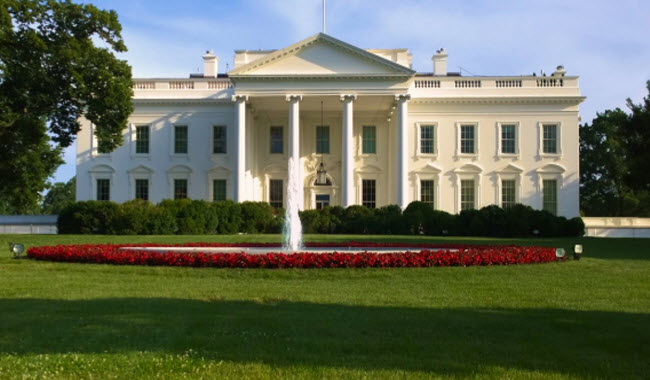The White House serves as the official office and residence of the President of the United States, as well as for members of the administration, since its opening in 1800. Located on Pennsylvania Avenue in Washington, D.C., this iconic building is widely regarded as one of the most famous political landmarks, not only in the United States but around the globe. Decisions made within its walls often have far-reaching impacts that resonate across the world. Encompassing 18 acres, the White House is the oldest federal building in the U.S. capital. In early maps, it was referred to as the “President’s Palace,” and in 1810, its name was changed to the “Executive Mansion” to avoid royal connotations. While “The White House” became a popular moniker due to its striking white sandstone exterior, it wasn’t until President Theodore Roosevelt’s administration in 1901 that the name was officially adopted by the press.
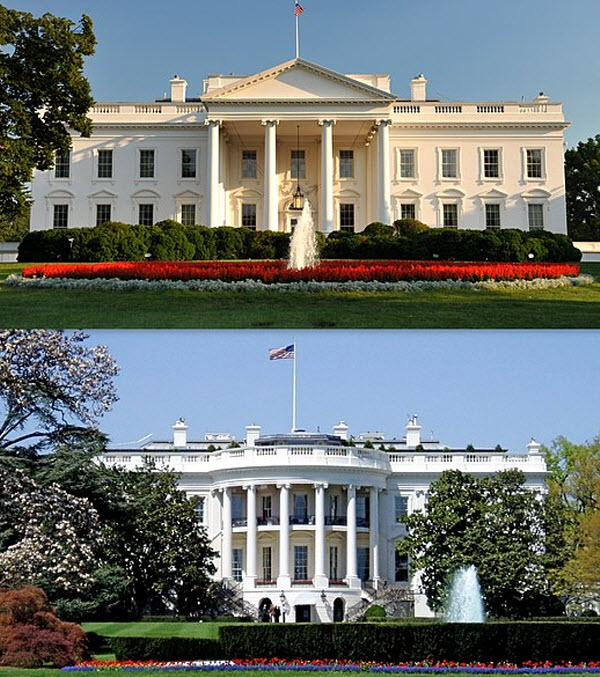
The Early History of the White House
The history of the White House dates back to 1792, when a public competition was held to select a design for a presidential residence in the new capital of Washington. Thomas Jefferson, who would later become the third U.S. president, submitted drawings, but it was Irish-American architect James Hoban who won the contest and the $500 prize. The building, intended to have three stories and over 100 rooms, was constructed using sandstone from quarries in Virginia. The cornerstone was laid on October 13, 1792, and laborers, including enslaved individuals, were housed in temporary huts on the northern side of the site. Skilled workers from Edinburgh, Scotland, joined the construction in 1793.
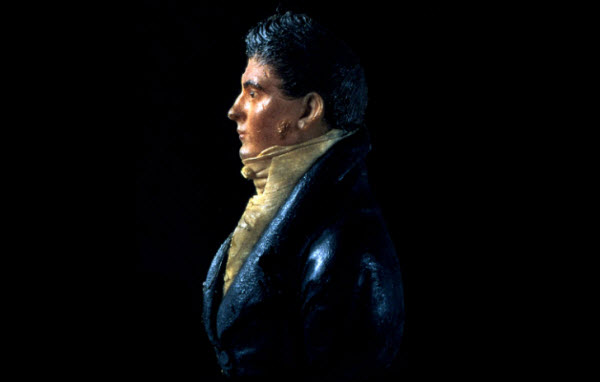
In 1800, the entire federal government moved from Philadelphia to Washington, and President John Adams became the first to reside in the unfinished presidential mansion on November 1st. That night, he wrote a letter to his wife, Abigail Adams, expressing his hopes that “only wise and honest men shall ever rule under this roof.” However, Abigail Adams was disappointed with the incomplete state of the residence, noting that there wasn’t a single finished room, no fence, yard, or any outdoor amenities. She even used the large, unfinished public room, now known as the East Room, to hang laundry.
The White House in the 19th Century
The “President’s House,” or “White House,” quickly became a focal point in the new federal city, symbolically linked to the Capitol by Pennsylvania Avenue. Following his inauguration in March 1801, Thomas Jefferson, the second president to reside in the Executive Mansion, opened the house to public visits every morning—a tradition maintained by his successors during peacetime. Jefferson himself designed the landscaping, adding two earthen mounds on the South Lawn to remind him of the Piedmont region in Virginia, his birthplace. Despite ongoing construction, the interior lacked adequate staircases and suffered from frequent roof leaks. During Jefferson’s term, the White House was elegantly furnished in the Louis XVI style, known in America as the Federal style.
During the War of 1812, British forces set fire to the White House, forcing President James Madison and his family to flee the city. They eventually took refuge in the Octagon House, owned by John Tayloe, a Virginia plantation owner. Reconstruction and expansion began under Hoban’s supervision, but the building wasn’t ready for occupancy until 1817, during President James Monroe’s administration. Hoban’s reconstruction plan included adding East and West terraces on either side of the main building and, later, a semicircular South Portico and a columned North Portico in the 1820s.
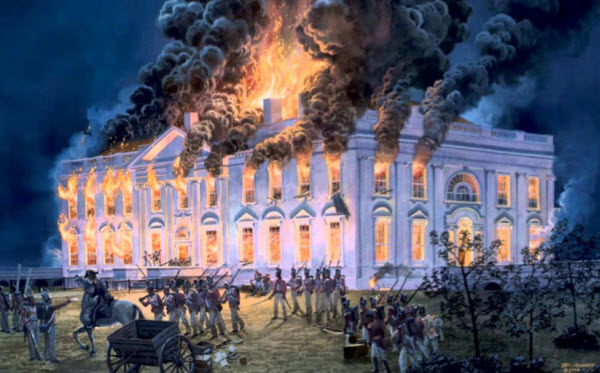
Throughout the 19th century, the White House became a symbol of American democracy. Many Americans viewed it not as a palace, but as a temporary residence from which the president serves the people. The idea of a president refusing to leave the White House after losing an election or being removed from office was unthinkable. This sentiment was evident during the inauguration of President Andrew Jackson in 1829 when thousands of well-wishers descended upon the nation’s capital. As Jackson rode down Pennsylvania Avenue to the White House, he was surrounded by a crowd of at least 20,000 people. Margaret Bayard Smith, an eyewitness, recounted that the halls of the building were filled with a rowdy mob clamoring for refreshments in the reception room. In the chaos, valuable china worth thousands of dollars was broken, and Supreme Court Justice Joseph Story expressed relief at escaping the scene. Jackson spent the night in a hotel, and his aides eventually lured the crowd out of the house with large vats of orange juice and whiskey.
In 1842, English novelist Charles Dickens visited the United States and, after receiving a formal invitation to the White House, found no one to greet him upon arrival. He let himself in and wandered through the mansion, moving from room to room, both downstairs and upstairs, until he reached a room filled with nearly twenty people. Shocked to see many of them spitting on the carpet, Dickens later wrote that he assumed the presidential servants were paid handsomely. Even during the Civil War, most White House staff members were enslaved, with the president himself responsible for paying their wages and managing expenses, including official events. It wasn’t until 1909 that Congress allocated funds to pay for staff salaries. Dickens wasn’t the only foreign visitor disappointed by the White House. On a visit to Washington just before the Civil War, Russian nobleman Alexander Borisovich Laker noted that the President’s House was barely visible behind the trees and remarked that the building was suitable for a private family but did not match European expectations. He was right; modifications to the White House in the 19th century were relatively minor. The interior decor was redesigned during different administrations, and modern conveniences were gradually added, such as a refrigerator in 1845, gas lighting in 1849, and electric lighting in 1891.

The White House in the 20th Century
During Theodore Roosevelt’s presidency, the second-floor rooms of the White House, which had been used as offices, were converted into family living quarters. With six children, Roosevelt’s family needed additional space, and the existing rooms became playgrounds for their pets and exotic animals, including raccoons, snakes, badgers, and even a bear. To accommodate the growing number of presidential staff and provide more office space for the president and his team, the West Wing was built in 1902, and the East Wing was added in 1942.
In 1948, during Harry Truman’s presidency, it was discovered that the main building was structurally unsound. Over the next four years, the entire interior was carefully rebuilt, although the original exterior walls were preserved. A second-floor balcony was added to the South Portico, and major renovations were made in the 1960s under the guidance of Jacqueline Kennedy, the wife of President John F. Kennedy. Renowned for her beauty and refined taste, Jacqueline Kennedy collected and displayed items of historical and artistic value throughout the rooms, transforming the White House into a center of national culture. She sparked public interest in its beauty by conducting a televised tour of the mansion in 1962.
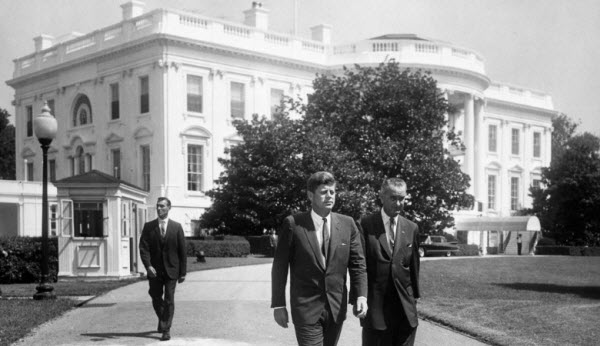
In addition to these renovations, the White House grounds have been expanded to accommodate the sports and recreational activities of presidents, their families, staff, and guests. A tennis court was installed near the West Wing during Theodore Roosevelt’s tenure and later moved south. President Barack Obama had removable basketball hoops and court lines added, allowing both tennis and full-court basketball games. President Franklin Roosevelt had an indoor heated pool built in the West Wing, which was later converted into the press briefing room. President Gerald Ford added an outdoor swimming pool on the South Lawn, and President Dwight Eisenhower had a putting green installed. Both Presidents Truman and Nixon had bowling lanes.
Today, the White House complex contains over 130 rooms. The main building still features living quarters for the presidential family and various reception rooms, all decorated in 18th and 19th-century styles. Parts of the main building are open to the public. The West Wing includes the Oval Office, the Cabinet Room, and press rooms, while the East Wing houses additional offices.
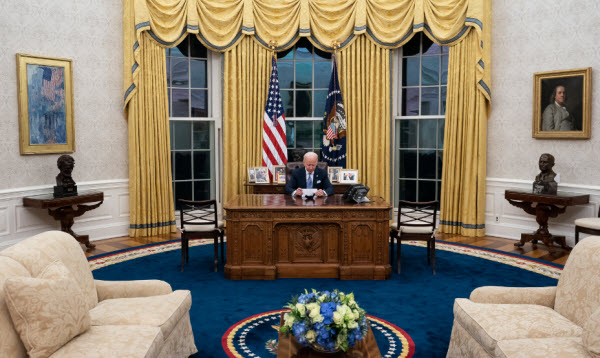
Notable Incidents Involving the White House
Throughout its history, the White House has become a major American historical site, attracting over 1.5 million visitors annually. However, it has also been the scene of several incidents. In February 1974, a stolen U.S. Army helicopter landed on the grounds without authorization. Two decades later, in 1994, a light plane piloted by Frank Eugene Corder crashed into the White House grounds, resulting in his immediate death. In response to increased security concerns regarding air traffic in the capital, the White House was evacuated in May 2005 before an unauthorized aircraft approached.
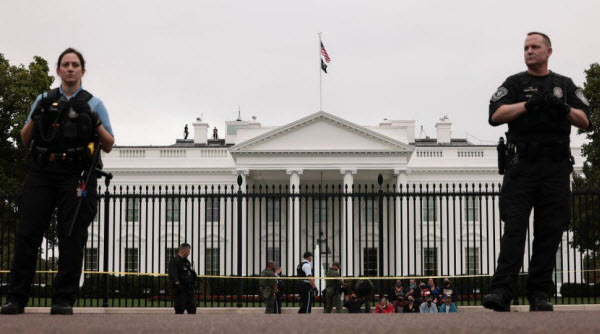
On May 20, 1995, following the Oklahoma City bombing on April 19, 1995, the U.S. Secret Service temporarily closed Pennsylvania Avenue to vehicular traffic in front of the White House. After the September 11 attacks in 2001, the closure became permanent, along with other areas. Following the Boston Marathon bombing, the avenue was closed to the public for two days. The decision to close Pennsylvania Avenue faced significant opposition from organized civic groups in Washington, D.C., who argued that the closure unnecessarily impeded traffic flow and contradicted the city’s well-designed historical plan. Nevertheless, these protests were ignored, and the area became popular with pedestrians, skaters, and even protesters on various issues.
The White House complex is protected by the United States Secret Service and the U.S. Park Police. Since 2005, NASAMS (Norwegian Advanced Surface-to-Air Missile Systems) units have patrolled the airspace over Washington, D.C., to protect the president. All airspace around the White House is strictly off-limits to aircraft.
